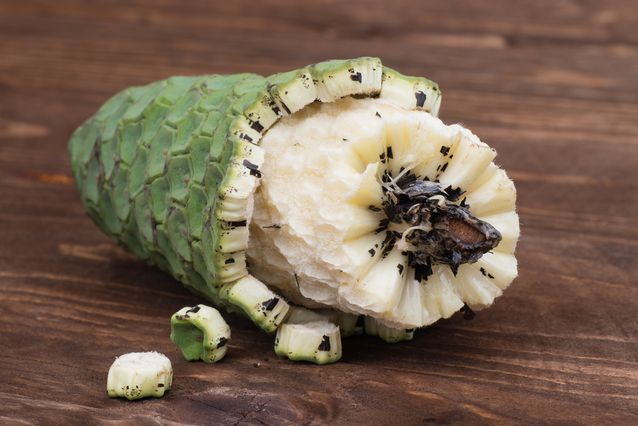Eating fruit is good for you and help you achieive a balanced diet. There are so many fruits to choosefrom in supermarkets these days, I bet you thought you would have tried all of them, but check out these ones you’ve probably never heard of…
1. Hala Tree Fruit
This is a fruit from Hawaii’s Hala Tree called Pandanus Tectorius, a species of screwpine (Pandanus). The colorful base of the ripe fruits are known as phalanges or “keys.” It can be eaten raw or cooked and is one of the traditional foods in Maldivian cuisine. The fruit only grows on female trees and can be eaten if the fruit turns yellow
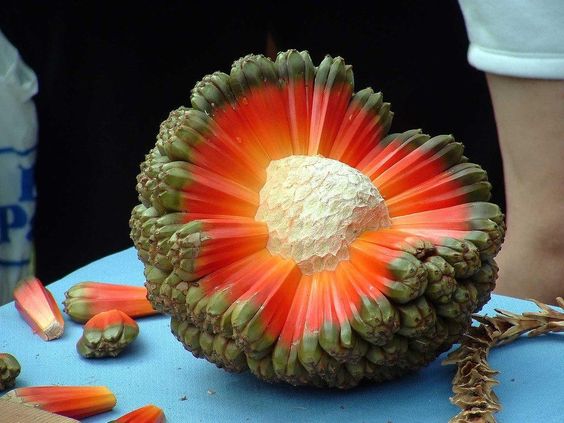
2. Aguaje
Aguaje fruit is grown on a tree called Mauritia Flexuosa or known as moriche palm that can be found in swamps or wet areas in South America. The fruit has shiny scales and is a chestnut color and grows from December to June. Rich in vitamin C and the oil from it’s pulp is high in vitamin A which can be used to treat burns. There is an antioxidant effect you can get from eating this fruit and it’s also good for the elasticity of your skin.
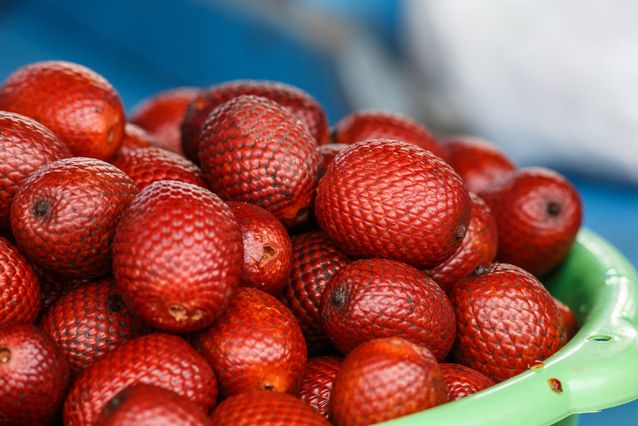
3. Cherimoya
It looks like a cross between a strawberry and an artichoke but tastes like a blend of banana and pineapple. Cherimoya can be found in South Asia, South America, Central America and South Europe. Mark Twain also called this fruit “the most delicious fruit known to men.” Eating cherimoya can help control heart rate and blood pressure. It is a good antioxidant too and a source of iron and niacin. The leaves, seeds and other parts of this fruit are said to have poisonous alkaloids that helps to kill lice.
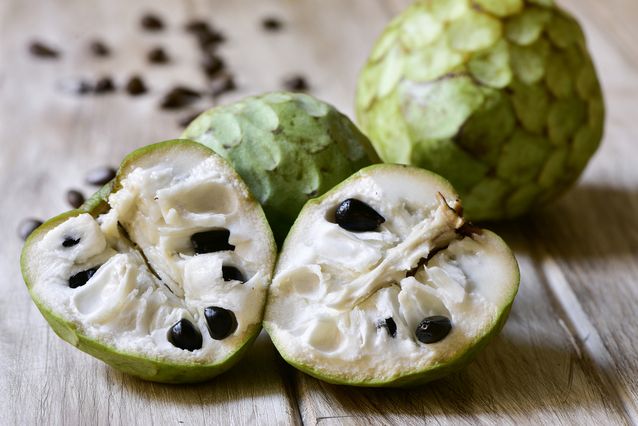
4. Langsat
Langsat is also known as Lanzones or Lansium parasiticum, and originally cultivated in western Southeast Asia. The fruit is oval or round shape, yellow in color and tastes sweet when ripe and sour when unripe. It contains vitamin C for antioxidant benefits and in boosting the immune system, vitamin A, ribloflavin and it’s high in fiber. The seed and skin of this fruit are used for treating intestinal parasites and diarrhea.
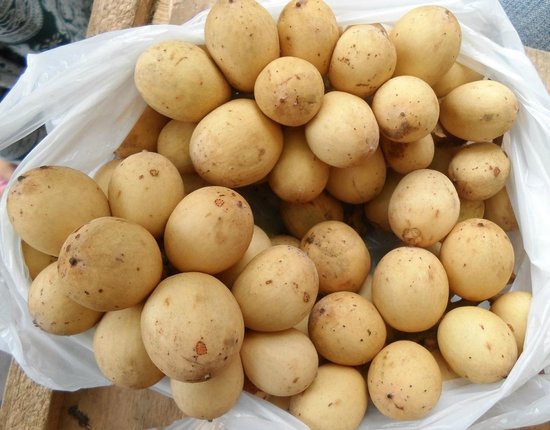
5. Miracle Fruit
Miracle fruit is native to west central Africa and normally grows on a warm to hot, wet to humid environment. It is an oval shaped berry that is green when unripe to bright red when ripe. Because it contains miraculin, a glycoprotein molecule, when you eat the flesh part of the fruit, at first it tastes bland but does taste sweet after eating sour foods. Health benefits in eating this fruit are weight loss, good for diabetes, a good health supplement and effective mood enhancer.
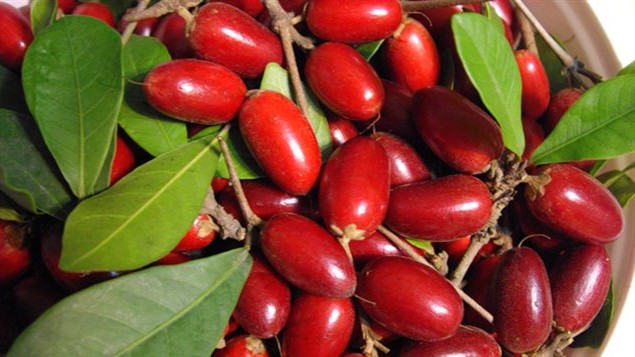
6. Horned Melon
This strange looking fruit is called Horned Melon because of it’s horn-like spines. It originates from Southern Africa and was introduced to Australia and New Zealand where it get it’s name Kiwano for it’s similarities with Kiwis. But horned melon is much closer to cucumber and zucchinis when it comes to nutritional values. When ripe it tastes more like a banana. Eating horned melon can help with weight loss, serves as an antioxidant, good for the eyesight and it also helps in metabolism and digestion. But just be mindful that eating unripe horned melons can cause stomach aches, fever and headache because of the chemicals in the fruit when it’s not ready to eat.
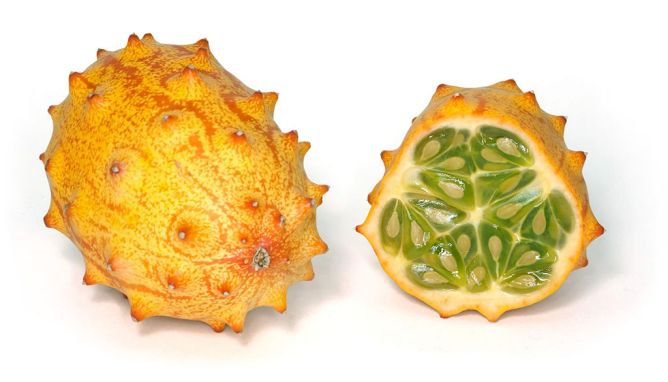
7. Durian
Durian is called “King of Fruits” in many Southeast Asian countries and known for it’s flavor and peculiar smell. A seasonal fruit that lasts from July till August. It has a spiky hard outer shell and an off white or yellow custard like flesh inside plus a distinctive odor. Although not the most appetizing looking fruit, there are health benefits from eating durian, as it’s a good source of antioxidant vitamin C. It is high in potassium that helps regulate blood pressure and heart rate. It is also high in fiber that is good for digestion.
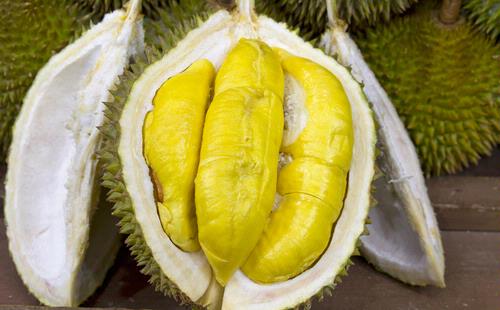
8. Rambutan
Rambutan is a fruit native to Malay-Indonesian region and other regions in Southeast Asia. It’s name came from the Malay-Indonesian word rambut which means hair because of it’s hair like appearance covering it’s red skin. The inside of the fruit is a smooth, white flesh that tastes sweet almost like lychee fruit but more tart. It is high in iron. Helps in weight loss because it is high in fiber and good in boosting energy because it is rich in carbohydrates and protein.
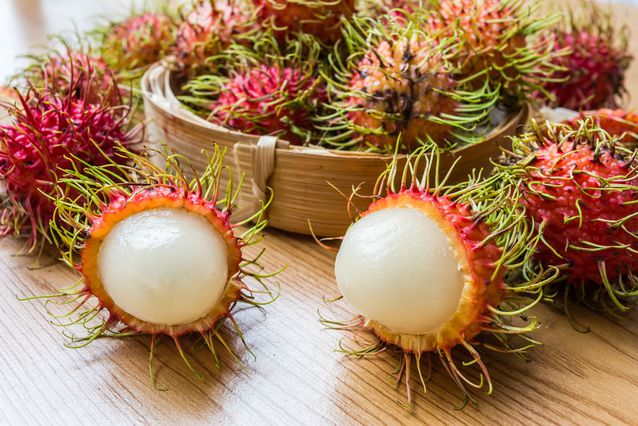
9. Dragon Fruit
This fruit is also called Pitaya that is indigenous in Central America but also grown in Thailand and Vietnam and exported to other Southeast Asian countries as well. It is considered a cactus plant and resembles the skin of a dragon! It’s outer appearance is usually reddish-pink and green on some parts. Inside it has white or black seeds, tastes mildly sweet and has a crunchy texture. Dragon fruit is rich in vitamin C, B1, B2 and B3 and an excellent source of monounsaturated fats. It is high in fiber for good digestion and it also contains antioxidants. Good for people with diabetes as it can stabilize blood sugar levels.
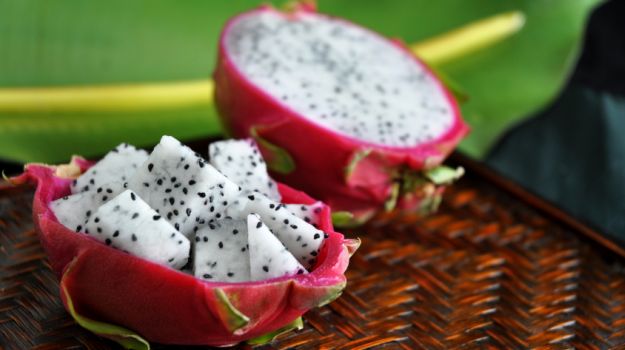
10. Jabuticaba
Native to Sao Paulo and Minas Gerais states in Southern Brazil, Jabuticaba is a round, purplish-black fruit that grows from the trunk of the tree. The name came from the Tupi words jabuti which means tortoise + caba means place, meaning the place where you can find tortoise having a snack on these fruits. You can make it into wine or liquor, it can be used as an ingredient for jellies and makes a refreshing drink during summer. Jabuticaba has good antioxidant and anti-inflammatory effects. High in protein, carbohydrates and contains vitamin B and C.
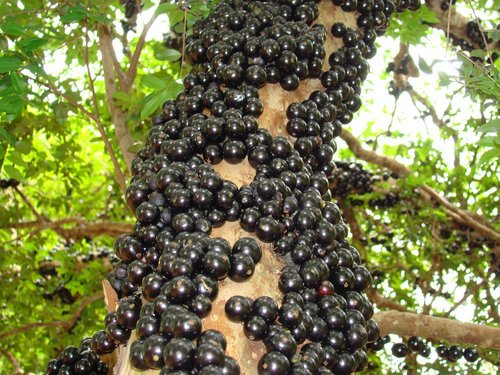
11. Monstera Deliciosa Fruit
Monstera Deliciosa fruit is native in Central America and Mexico and shaped like cucumber but looks like corn. You have to wait for a year to make sure that this fruit is ripe before you can eat it. It contains toxins that can be poisonous or may cause allergic reactions if eaten when unripe. The fruit ripens from the bottom up and will peel on it’s own where you can see the white flesh inside. It will taste like a combination of pineapple, banana and mango. This fruit is loaded with vitamin C, phosphorus, calcium and zero fat.
